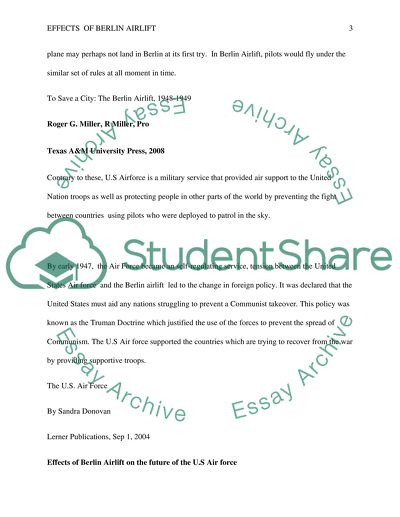Cite this document
(“Effect of the Berlin Airlift on the future of the U.S. Air Force Term Paper”, n.d.)
Effect of the Berlin Airlift on the future of the U.S. Air Force Term Paper. Retrieved from https://studentshare.org/history/1495869-y-what-was-the-effect-of-the-berlin-airlift-on-the
Effect of the Berlin Airlift on the future of the U.S. Air Force Term Paper. Retrieved from https://studentshare.org/history/1495869-y-what-was-the-effect-of-the-berlin-airlift-on-the
(Effect of the Berlin Airlift on the Future of the U.S. Air Force Term Paper)
Effect of the Berlin Airlift on the Future of the U.S. Air Force Term Paper. https://studentshare.org/history/1495869-y-what-was-the-effect-of-the-berlin-airlift-on-the.
Effect of the Berlin Airlift on the Future of the U.S. Air Force Term Paper. https://studentshare.org/history/1495869-y-what-was-the-effect-of-the-berlin-airlift-on-the.
“Effect of the Berlin Airlift on the Future of the U.S. Air Force Term Paper”, n.d. https://studentshare.org/history/1495869-y-what-was-the-effect-of-the-berlin-airlift-on-the.


